One of the twenty-two districts of Punjab is Sahibzada Ajit Singh or SAS Nagar. This district is also popularly known as Mohali. Officially named after the eldest son of Guru Gobind Singh, Sahibzada Ajit Singh, it is one of the most popular districts in Punjab. It lies next to the union territory of Chandigarh and Panchkula (Haryana) and is a part of the Rupnagar division. It is a very popular hub for companies and community life as it has all the facilities at it’s best, with cheap and affordable prices.
Assembled on 14th April 2006 and carved out of areas falling under Ropar and Patiala, this sought-after district is the 18th District of Punjab. Formed in the vicinity of Chandigarh, making it a center for growth and development. Above all, as this area has all the facilities required for growth, it is emerging as a hot center for the I.T. hub in Northern India. It has become a satellite town of Chandigarh and has registered a fast rate of growth from all around the area.
There are many areas that come under this marketable district. During the last check, in 2019 a total of 383 villages, mainly cut from Patiala district, came under this district. Following is the list of the important township that comes under the caretaking of Mohali:
- Zirakpur
- New Chandigarh
- Kharar
- Bakarpur
- Bhankharpur
- Banur
- Chappar Chiri
- Daon
- Mohali, Ajitgarh or Sahibzada Ajit Singh Nagar
- Mubarik Pur
- Sohana
- Kurali
- Kumbhra
- Dera Bassi
- Mattaur
- Tewar (Tiaur)
- Nayagaon
- Lalru
- Jhande Majra
- Dappar
As of the recent years, 27 new villages are added in the District Sahibzada Ajit Singh Nagar. However, due to its large size, it became difficult to manage and hence, was further divided into 3 blocks which are:
- Kharar Block
- Dera Bassi Block
- Majri Block
KHARAR BLOCK
- This block consists of 154 villages and 2 towns namely Ajitgarh and Kharar and 4 other un-inhabited villages.
- The total area of the block is around 411.32 km2 with a population of around 369,798.
- The rural cover is around 383.26 km2. with a total population of 55,544.
- The area allocated among 17 branches of commercial banks and 4 branches of RPBs.
- SAS Nagar has emerged as an Industrial Focal Point attracting many companies.
DERA BASSI BLOCK
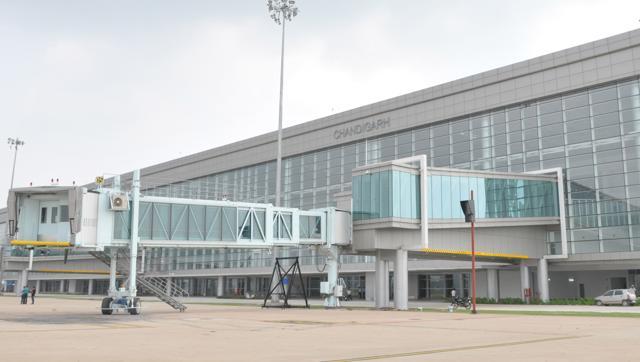
Source : Dera Bassi Wikipedia
- 144 villages and 2 towns namely Zirakpur and Dera Bassi and 6 other un-inhabited villages are there.
- The rural population is 170192 with a total area of 406.48 km2.
- It has multiple small scale units and small scale industries.
The soil is from sandy to sandy loam. - It has a town named Zirakpur which is seeing very fast development and has become. part of the Greater Chandigarh.
MAJRI BLOCK
- It is a part of the Kharar subdivision.
- The area of the block is around 274.84 km2.
- Kurali is the only town with a decent number of population, hence this block comes under a dark category.
- Has many large and small-scale industrial units around Kurali, established due to governments incentive.
- Has 116 villages.
HISTORY

As it was a part of the Punjab region, it had many rivers nearby where the ancient and primitive settlement by humans began. In addition to that, Harappan Civilization also inhabited here some 8,000 years ago. Therefore, because of their many agricultural practices and vicinity to water outlets made the soil of this area very fertile, which is a key feature in today’s times too.
There was even a battle that took place here in the year 1845. The fight was between the Britishers and Sikhs. The Sikhs were led to the battlefield under the leadership of Akali Hanuman Singh. In addition to that, the celebrated leader also attained Martyrdom in the fight to save the people from the cruelties of the Englishmen.
The partition of India took place in 1947, which led to the highly controversial split between east Punjab and West Punjab, now famously known as Pakistan. This split led to some major changes in the layout of the area as well as the nation.
MODERN HISTORY
After the trifurcation of Punjab and its capital ‘Chandigarh’ in the late 1960s, Mohali was developed. When the establishment of Chandigarh had taken place, the area around it was also then developed as an industrial center in order to give a boost to employment and income. In addition to the industrial property, the residential property was also developed in order to give the laborers and employees a place to stay.
All India Congress Committee during the annual session held in 1975 at Mohali gave out the residential plan for the newly forming city. After that, on 1 November 1975, Punjab Chief Minister Giani Zail Singh laid the foundation stone of Mohali township and named it Sahibzada Ajit Singh Nagar.
Nowadays it has become an industrial center, attracting many IT Companies and other employment centers. The Affordable and efficient resource system with the availability of all facilities have made this an excellent and ever grown hub for new industries.
PLACE TO TRAVEL
There are many places one can visit in this town. For Instance, the city is filled with Beautiful Gurudwaras and parks. Following is the list of such places:
- Gurudwara Singh Shaheedan
- Fateh Burj
- Gurudwara Amb Sahib
- Shri Shiv Mandir
- Rose Garden, Phase 3B2
- Bougainvillea Garden, Phase 4
- Silvy Park, Phase 10
- Valley Park, Phase 8
- Ekta Park, Phase 7 (Near Chawla Chowk) Mohali
- Musical Fountain Park, Sector 70
- City park, sector 68
In addition to these, there are many market places which one can visit at any time to spend quality time and have a breath of fresh air.
OTHER FAMOUS PLACES
- Mohali is famous for its PCA Cricket Stadium.
- For Hockey Fans, there is also an International Hockey Stadium.
- Mohali is also famous for VR Punjab (Formerly NC Mall). It is the biggest mall in Punjab and Tricity.
- Many popular educational institutes like NIPER, IISER, Army Institute, ISB, CDAC are also flourishing there.
- Mohali is famous for the healthcare industry like Fortis, Spinal Regional Centre (Only 4 in India), Ivy Hospital, Max Hospital, etc.
- Mohali has famous industries like Godrej, Sun Pharma, Philips, SCL (Semiconductor labs).
Also know : YPS Mohali – It is a Good School?
City Guide
Mohali Gets 17cr Traffic Infra Boost: Three New Roundabouts to Ease Airport Road Congestion
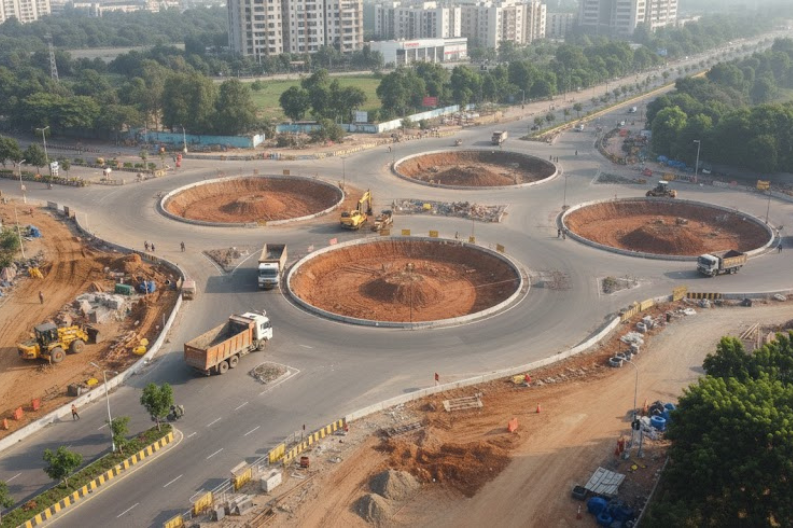
AI Generated: Not a real image
The Greater Mohali Area Development Authority (GMADA) has launched a 17cr traffic infra boost project to transform the city’s congested roads. MLA Kulwant Singh inaugurated the construction work on Tuesday, marking the beginning of major infrastructure upgrades across Mohali.
The project will create three new dumbbell-shaped roundabouts and upgrade several existing junctions. These improvements aim to reduce traffic jams, enhance road safety, and provide relief to thousands of daily commuters who face severe bottlenecks during peak hours.
Project Locations and Status
| Junction | Location | Status |
|---|---|---|
| New Roundabout 1 | Gurdwara Singh Shaheedan, Sohana | Work started |
| New Roundabout 2 | Light point (Sectors 68, 69, 78, 79) | Upcoming |
| New Roundabout 3 | Junction (Sectors 67, 68, 79, 80) | Upcoming |
| IISER T-Point | Airport Road | 90% complete |
| Cheema Boiler Chowk | City center | Upgrading |
| Quark City Junction | Near CP-67 Mall | Upgrading |
The most critical work will happen near Gurdwara Singh Shaheedan, where heavy traffic creates daily chaos. Additionally, the light point connecting multiple sectors has become notorious for long jams during morning and evening rush hours.
GMADA Executive Engineer Sukhwinder Singh Matharu explained that construction will proceed in four phases. Therefore, the authority has implemented a detailed traffic diversion plan to minimize public inconvenience. Consequently, vehicles from Kharar will now use the Purva Apartments road, which leads directly to the airport.
The entire project carries an estimated cost of Rs 17.71 crore. Moreover, authorities expect to complete the work by October 2026. However, vehicular movement should resume on most routes within one to one-and-a-half months.
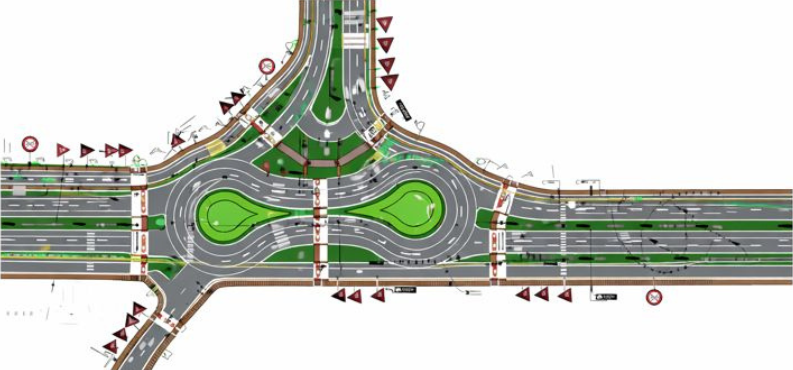
Source: The Indian Express
MLA Kulwant Singh announced additional development plans during the inauguration. He promised to propose naming the new roundabout after Amar Shaheed Jathedar Baba Hanuman Singh. Furthermore, he revealed plans to lay the foundation stone for a women’s hostel in Sector 66 soon.
Singh emphasized that five roundabouts have already been constructed in Mohali. The current project builds on this success to create a comprehensive traffic solution. Meanwhile, he clarified that ongoing anti-encroachment drives follow strict court directions and should not be politicized.
The expansion of the Mohali Municipal Corporation limits will further accelerate pending development works. As a result, residents can expect faster implementation of long-awaited infrastructure projects.
This 17cr traffic infra boost represents the Punjab government’s commitment to Mohali’s holistic urban development. The improvements will significantly enhance connectivity, reduce travel time, and make daily commutes safer for everyone.
City Guide
RSS Leader’s Son Shot Dead in Ferozepur: Woman Arrested for Sheltering Shooter
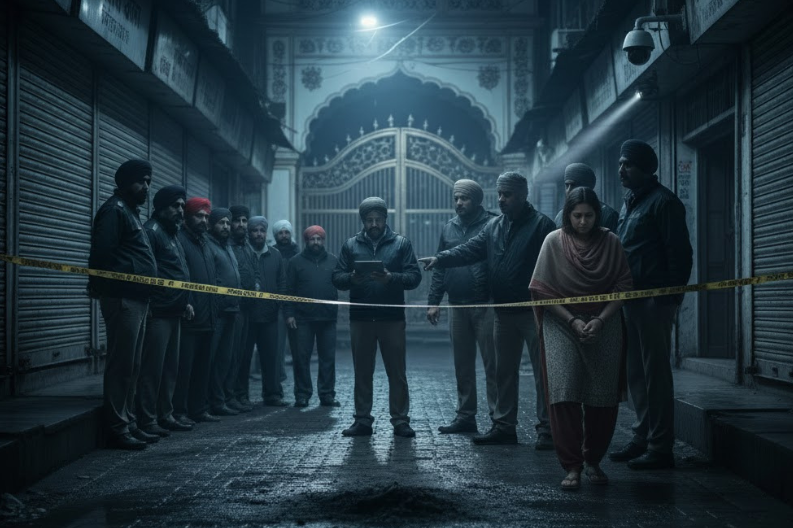
AI Generated
An RSS leader’s son shot dead in Ferozepur has triggered a major investigation, with police making multiple arrests in the case. Naveen Arora, a 32-year-old shopkeeper, died after two unidentified motorcycle-borne attackers shot him on November 15, 2025. The victim’s father, Baldev Raj Arora, has been associated with the Rashtriya Swayamsevak Sangh (RSS) for many years.
The incident occurred around 7 pm on Saturday evening near Sadhu Chand Chowk. Specifically, Naveen was walking from his dupatta shop in the main bazaar to his residence when the attack happened. Additionally, the assailants fired at him near Baba Noor Shah Wali dargah before quickly fleeing the scene.
One bullet struck Naveen in the head. Consequently, family members rushed him to a private hospital, where doctors declared him dead on arrival. Furthermore, the family initially refused cremation, demanding justice for their son.
Naveen’s grandfather, the late Dina Nath Arora, had also been a senior RSS leader in Ferozepur. Therefore, the family has deep roots in the organization spanning multiple generations. Meanwhile, Naveen himself served as an RSS volunteer alongside running his business.
Senior police officers, including SSP Bhupinder Singh and Deputy Superintendent of Police (City) Sukhwinder Singh, reached the spot immediately. Moreover, they formed multiple teams to identify and trace the suspects. Subsequently, police began scanning CCTV camera footage from nearby establishments to ascertain the identities of the killers.
The investigation has revealed several important developments. First, police arrested three persons in connection with the conspiracy: Jatin Kali, identified as the alleged mastermind, along with Kanav and Harsh. However, the main shooter, Nachhatar Singh from Jalandhar, remained at large initially.
In a significant breakthrough, Ferozepur police arrested a Ludhiana woman named Bhavna on November 23, 2025. Police sources revealed that she provided shelter to Nachhatar Singh after the murder. Additionally, she allegedly helped him flee after the crime. Consequently, authorities registered a separate case against her under the relevant sections.
Bhavna, daughter of Ashok Kumar and resident of Tibba Road in Ludhiana, is currently in custody. Furthermore, interrogation is underway, with investigators hoping for major breakthroughs. Police believe she played a crucial role in the escape plan.
SSP Bhupinder Singh explained the complexity of the case during a press meet. He informed media persons that the conspiracy appears far more organized than initially thought. Specifically, Jatin Kali allegedly orchestrated the plan for a payment of just ₹60,000-65,000. However, arranging professional shooters from Jalandhar and safe houses in Ludhiana points toward a larger network.
Investigators remain baffled by the sophistication of the escape plan. Therefore, they suspect involvement of an established gangster or influential outsider who provided logistical support and funding. Despite intensive raids, police have not apprehended any major gangster so far, deepening the mystery.
The murder triggered widespread anger among local traders and RSS workers. On Sunday, following the incident, markets wore a deserted look. Subsequently, shopkeepers closed their establishments completely on Monday, demanding immediate arrest of the assailants.
Heera Sodhi, a senior BJP leader from Ferozepur, confirmed the market closure. Similarly, senior RSS functionary Ashwani Dhawan urged authorities to take strict action against the perpetrators.
Punjab BJP chief Sunil Jakhar strongly criticized the state government over the incident. He alleged that gangsters are running a parallel government in Punjab. Additionally, he claimed Chief Minister Bhagwant Mann has failed to fulfill his responsibilities.
Jakhar stated that people of Punjab are being forced to live in an atmosphere of fear. Moreover, he alleged that the AAP government has completely failed to maintain law and order. He also claimed people receive threats and extortion calls every day.
Ranbir Singh Bhullar, AAP MLA from Ferozepur City, met with Naveen’s family members. Furthermore, he assured them of strict action against the accused. Meanwhile, SSP Bhupinder Singh also met the Arora family on Saturday evening, promising swift action.
Punjab BJP working president Ashwani Sharma condemned the murder, saying it was neither the first nor an isolated incident. He emphasized that a spree of murders targeting businessmen, athletes, youth, and common people raises serious questions about the government’s working style.
Union Minister of State (Railways) Ravneet Singh Bittu also reacted strongly. He described the murder as brutal and said it has shaken not only the Arora family but the entire Punjab. Additionally, he emphasized that people are feeling increasingly unsafe and need tougher action.
Police officials have assured that the arrest of the remaining accused, including Nachhatar Singh, is only a matter of time. Furthermore, they promised that the full conspiracy will soon be unraveled. Investigators continue gathering evidence through CCTV footage and eyewitness accounts.
The RSS leader’s son shot dead in Ferozepur case continues developing, with authorities working intensively to bring all perpetrators to justice and uncover the complete network behind this organized crime.
City Guide
Sacked Cop Gets Life Term for Woman’s Murder: Body on Bench

ChatGPT Generated (Not a Real Image)
A Mohali court ruled that a sacked cop gets life term for woman’s murder, convicting dismissed Assistant Sub-Inspector (ASI) Rashpreet Singh in a 2022 case. Along with life imprisonment, the court also imposed a fine of Rs 40,000. The verdict came after he was found guilty of murder and destruction of evidence, though rape charges were not proven.
The case dates back to November 13, 2022, when 23-year-old nurse Naseeb Kaur went missing from her paying guest accommodation. The very next day, locals discovered her body in a pond at Sohana village under suspicious circumstances. Investigators later confirmed that Rashpreet had known the victim for years and shared a close personal link with her.
On the complaint of the victim’s father, police initially registered a rape and murder case against an unidentified person. However, during the investigation, Rashpreet, a resident of Sector 86, came under suspicion and was arrested. Evidence ruled out rape but clearly established murder and an attempt to erase proof of the crime.
After examining witness statements and case records, the court held Rashpreet guilty on September 8. Today, it announced the final sentence. The judge observed that crimes committed by law enforcement officers not only violate the law but also erode public trust, demanding strict punishment.
With this ruling, Rashpreet Singh will now spend his life in prison. For the victim’s family, it brings a measure of justice, while for society, the sacked cop gets life term for woman’s murder serves as a stern warning against the misuse of power.
-
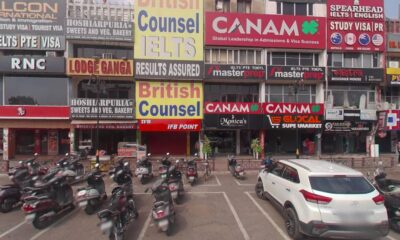
 City Guide3 years ago
City Guide3 years ago3B2 Mohali Market Shops: Discover 44 Hidden Gems
-

 Entertainment2 years ago
Entertainment2 years agoTop 15 Punjabi Models – Male and Female List
-

 Entertainment3 years ago
Entertainment3 years agoTop 11 Punjabi Comedians of All Time
-

 Jobs4 years ago
Jobs4 years agoTop 20 IT Companies in Mohali
-
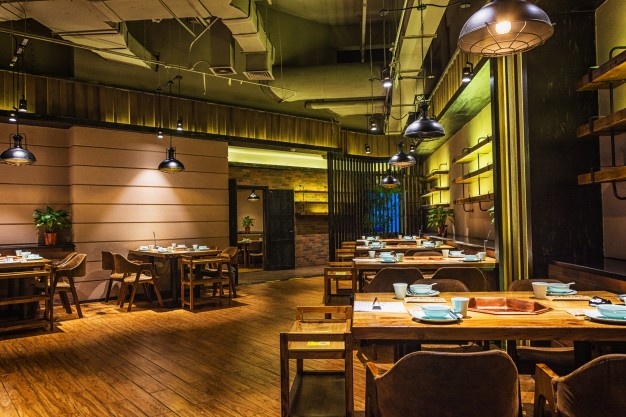
 Food4 years ago
Food4 years ago11 Best Restaurants in Mohali You Must Visit
-

 Food3 years ago
Food3 years agoTop 15 Cafes in Mohali you must visit
-

 Property2 years ago
Property2 years agoWho Lives In Homeland Mohali: Punjabi Celebrities, Business People…
-

 Education2 years ago
Education2 years ago10 Famous Punjabi Writers With A Great Impact On The Literary World
